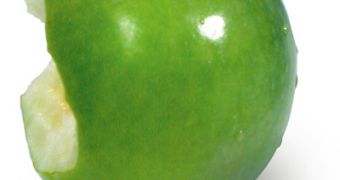So what is really the cause of apples remaining healthier than pears for a much longer time after being picked up? Scientists argue that it all has to do with oxygen and the way it behaves in order to reach the center of the fruit. By using one of the most powerful light sources in the world, Pieter Verboven of the Catholic University of Leuven proved that pears as well as apples contain pores and channels that help carry oxygen inside them, thus when pears can no longer absorb oxygen they go bad.
"If we know how the pears get into storage, we can better predict how they will behave. From season to season, from batch to batch, even from orchard to orchard - we can give advice to the grower, saying 'well, for these pears, you may have to elevate the oxygen concentration in your storage room because there is the potential for problems'," said Verboven in an interview.
Even after they are picked, the cells of the fruit still require certain amounts of oxygen in order to maintain good health. However, if this oxygen supply cannot be provided or cannot pass through the fruit, it starts to rot from inside out. X-ray investigations at the European Synchrotron Radiation Facility were able to reveal structures inside the fruit less than a thousandth of a millimeter across, showing that specialized structures having the role of providing oxygen do exist, and in apples they are represented by irregular cavities between cells, while those of pears are tiny interconnected channels.
"We already knew that different apple varieties have a different density which means they have a different fraction of air spaces; but we didn't know the structures. We also knew that pears have a much lower amount of void spaces inside because pears sink to the bottom if you drop them in water whereas apples float, which indicates that one has more air than the other one," Dr Verboven said.
European Synchrotron Radiation Facility
The ESRF in Grenoble, France works by shooting electrons from a linac accelerator, which then enter the Booster synchrotron before going into the storage ring. As electrons are accelerated at relativistic speeds through the 850 meter across storage ring they start emitting energy by radiating X-ray light, which is then collected into beamlines.
It is the most powerful light source in Europe and it is generally used to probe different types of materials at molecular and atomic level, including drugs, electronics and, why not, fruit?
"It is still unclear how airways in the fruit develop, and why apples have cavity structures and pears micro-channel networks. The micro-channels are so small that oxygen supply to the fruit core is very limited and cells are quickly 'out of breath' when oxygen levels fall below the safety threshold," explained Dr Verboven.

 14 DAY TRIAL //
14 DAY TRIAL //